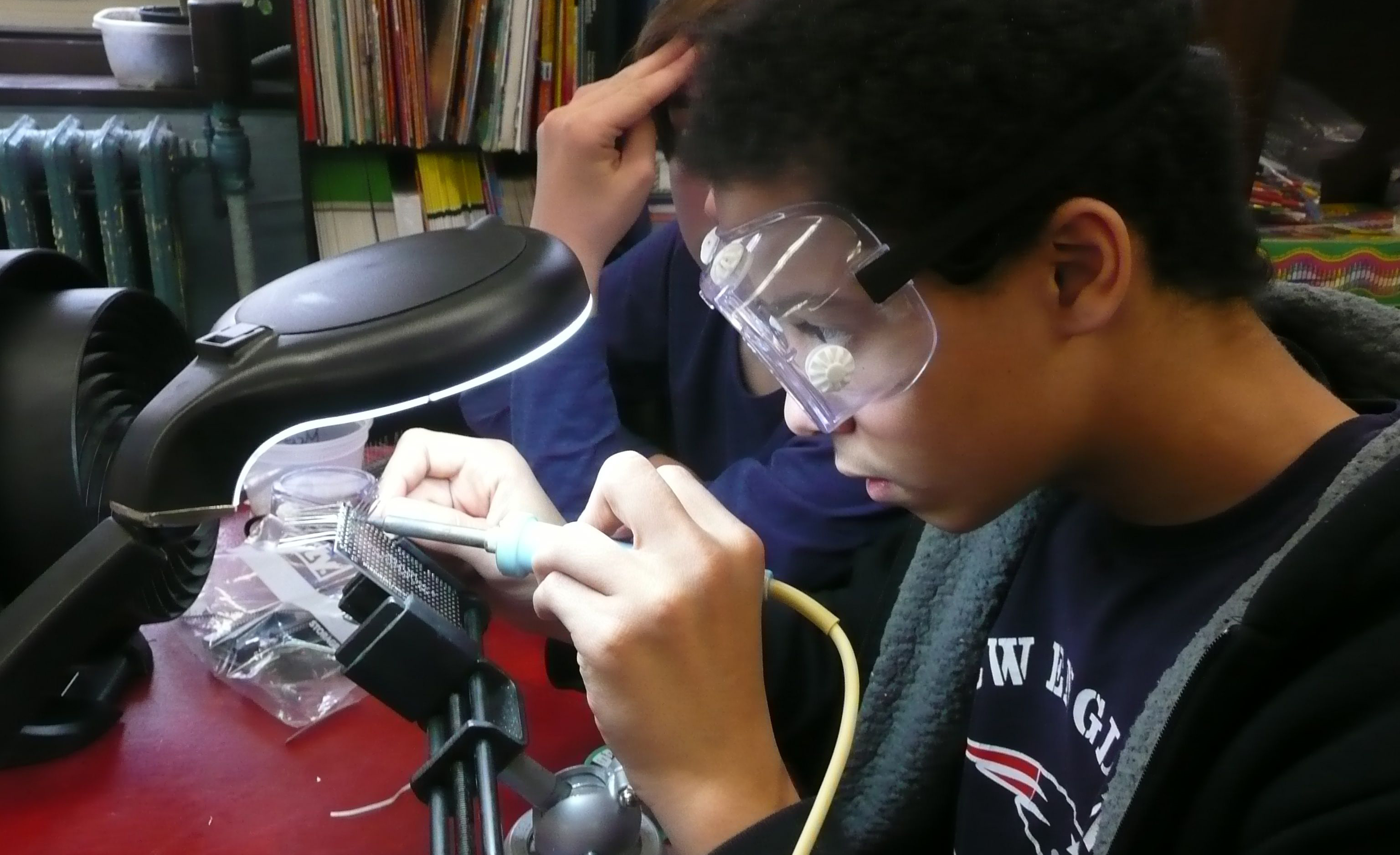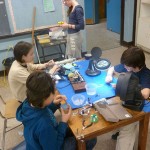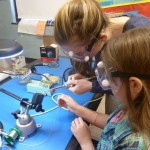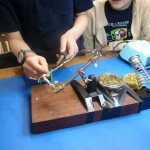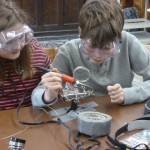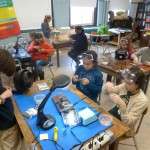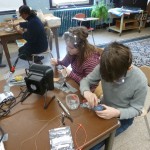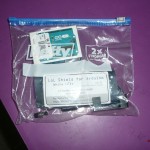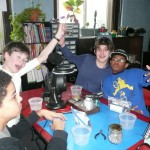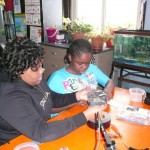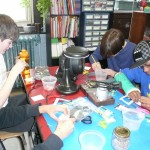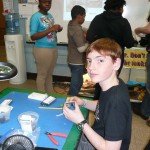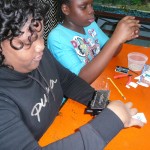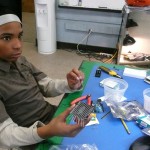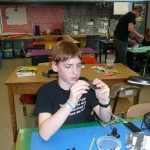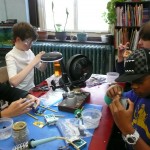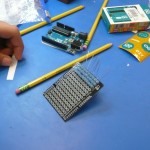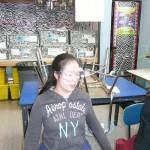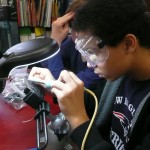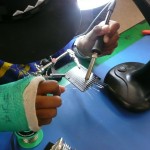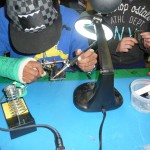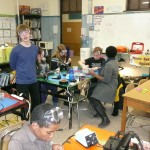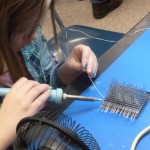We have to start by saying how proud we are of the attendees that came to the February Makers Camp held last week at the Curley K-8 School. Our group of eight students all worked so hard on their projects, they learned some new skills, contributed to the cooperative design and assembly of a community project, and solved how to make a free standing structure out of spaghetti and marshmallows. All of them completed the construction of their own take home project.
The Arduino micro-controller is like a little computer that was designed to make it easy to create multidisciplinary electronic projects. It is possible to add external boards (aka shields) which plug into the Arduino and extend its functionality.

These shields include but are not limited to Global Positioning Systems, Wireless network, sound modules, temperature sensors, motion sensors, motor controllers and LCD displays. We focused on a locally designed product called LOL array (Loads of LEDs) that gave us the opportunity to introduce the kids to soldering and also to learn how to program some animation sequences.

The first day was an introduction to soldering – using lead free solder of course! We setup 3 soldering workstations and started out by soldering big pieces of copper wire to familiarize our students with the general principle of what a good solder weld is. We then moved to smaller wire with copper clad blank circuit boards, that allowed the students to practice soldering on the scale needed to work on the LOL array.
Then with everyone suitably skilled up the students set about assembling the LOL arrays with its 126 LEDs and 4 headers, requiring over 250 individual soldering connections on a diminutive 2×3” Arduino Uno sized board. Ms Falkner – one of our counselors from CASP – saw the light as it were and set about building her own. Several hours later each student had their own functioning LOL array and so it was on to programming.

For the animation the students had to design a sequence of panes that the LOL can display and then set about programming the Arduino to play them. By displaying a series of panes in quick succession the animation magic happens.

The task of building the LOL array and programming it is fairly intense and so it was good to have another fun activity in which all the students could cooperate and interact. The community project was a chance to see the LilyPad in action – this board is also an Arduino but is a little smaller than the Uno and when combined with conductive thread that can be stitched into material it allows us to create a wearable or flexible device. In this case our group decided to design and assemble a fabric panel showing a colorful dragon banner.

Another activity that the group focused on was building the tallest structure out of spaghetti, marshmallows and tape. Maybe this is where Mr Eifel got his idea from.

On the last day the students finished up any remaining programming of the LOL array, built some boxes to put the Arduino and LOL array in and also finished the assembly of the banner project. We are happy to report that at the end of the camp everyone managed to take home a functioning LOL array and the skills on how to program it some more. There is a little more work to do to complete the community project which we will likely do in a follow up session soon. The camp was a pilot program designed to initiate curious minds into the electronics and programming world and to that end we consider it a success. Next time we will likely try to work with a larger group of students.
Finally, at the Artisan’s Asylum in Somerville on Sunday 14th April at 1-5PM there is an event called the “DIY Throw Down” where the camp’s attendees are invited to show off the product of their labors.
RESOURCES
